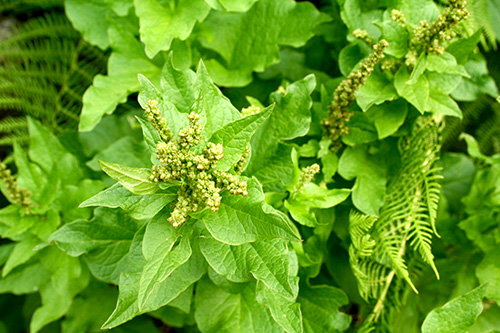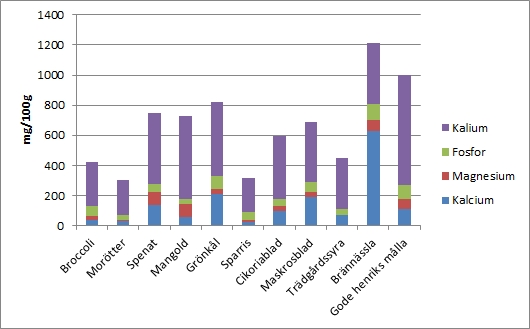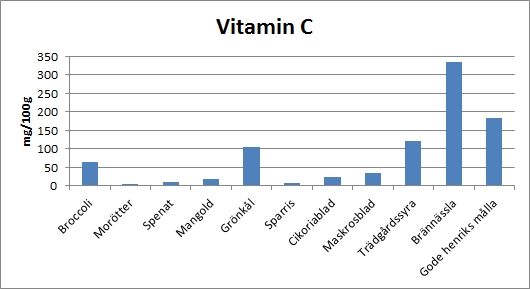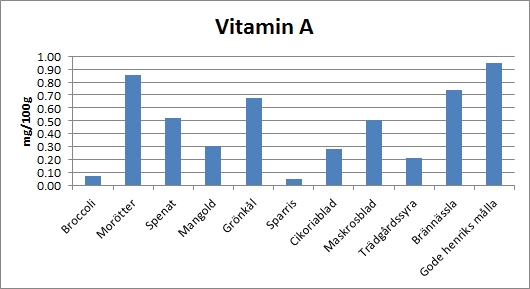In the first part of this post I wrote about that perennial plants have a much longer harvest season than annual plants, they require less work and are good for the earth. In this post we'll look at more good reasons to grow perennials.
Perennial crops are good for the climate
Trees absorb large amounts of carbon in their tissues, both in the wood and roots, by taking up carbon dioxide from the atmosphere. A single tree can take up four tons of carbon dioxide over its lifetime, which is approximately 250 mils car driving. Furthermore, if we are planting shrubs, covers, roots and vines as we do in a forest garden increases inlagringsförmågan further. Martin Crawford estimates that his forest garden binds 40 tonnes of carbon per year from the atmosphere.
In a culture that is based on annual plants reacted carbon dioxide is much faster and no net uptake occurs. On the contrary, the world's soils degraded by annual tillage and roughly a third of all carbon dioxide emissions to the atmosphere since the industrial revolution came from the decomposition of the organic mass in our's soils [1]. The potential for perennial cropping systems that forest gardens are particularly on sloping lands, who are most vulnerable to erosion problems. A third of all the carbon dioxide the human race emit annually today would be caught on the cultivated land that slopes more than 30 grader (9% of the Earth odlingsyta) planted with perennial crops.

Perennial crops are healthier
Perennial crops are generally less susceptible to disease, especially if they are grown in a forest garden where species diversity is high and where there is a good balance between pests and beneficial insects. The perennial plants are generally less processed than annual and thus has retained some wild characteristics that make them more resistant to all sorts of pressures. Since perennials do not require annual tillage may additionally developed a natural and rich microlife in earth, This helps to keep plants healthy. Everything's all about balance and balance is much easier to maintain in a woodland garden than in a monoculture of annuals.
Perennial crops are healthier
Compared with annual vegetables are perennial vegetables in many cases much healthier for us humans. This has partly to do with the man over the centuries have bred away properties such as bitterness at the annual vegetables. Along with the bitter taste disappeared, however, also many other positive qualities, so that the level of antioxidants [2]. Additionally, perennials with its deep root system better access to minerals and mortality is generally richer in perennial crops, which means that the plants get the help of microbes and fungi to absorb nutrients which will then benefit us.
But how nutritious are perennial vegetables in comparison to some of the most nutritious vegetables common? The content of various minerals in both some perennial and annual vegetables, I have compiled the chart below. Although concentrations vary greatly in nature between different plant individuals and habitats, we can see that nettle (Urtica dioica) and Gode henriks ORACHE (Chenopodium bonus-henricus) among the most mineral-rich vegetables. The latter also has an enormously long harvest period, from early spring to late autumn. Although nettles will again and can be harvested throughout the season if you cut them down periodically. Yet the taste is best in spring.

Even with respect to protein content sticking nettle and Good henriks ORACHE out amount, with a twice as high in protein as several of our most nutritious vegetables annuals.

The vitamin C content is highest in stinging nettles and Good henriks ORACHE, while the difference between the annual and perennial vegetables are smaller with respect to Vitamin A.


In summary it can be stated that there is much to be said for giving perennials more space in our farms. They have a longer harvest season, is often more nutritious, requires less maintenance, are healthier and kinder to both the soil and the climate. However, we must learn to use them in our cooking, both how to prepare them and they taste different than most of what we are accustomed to.
This synopsis is based on data from several different sources ([3], [4], [5]) and a similar statement was made by Martin Crawford [6]. More about the woody plants' nutritional content will come later in a series about growing nut trees in the Swedish climate.
References
[1] Montgomery, D.R., Dirt : the erosion of civilizations. Berkeley: University of California Press, 2007.
[2] Robinson, J., Eating on the wild side : the missing link to optimum health. 2013.
[3] USDA. National Nutrient Database for Standard Reference. Accessed 2014-03-19; Available from: http://ndb.nal.usda.gov/, 2011.
[4] Schuster, C. Nutrients in wild herbs and vegetables Culture. Accessed 2014-03-19; Available from: http://www.wild-kraeuter.de/naehrstoffe.htm, 2013.
[5] Foodnutritiontable.com. Nutritional information, Sorrel, raw. Accessed 2014-03-19; Available from: http://www.foodnutritiontable.com/nutritions/nutrient/?id=833, 2014.
[6] Crawford, M., How to grow perennial vegetables : low-maintenance, low-impact vegetable gardening. Totnes: Green, 2012.


